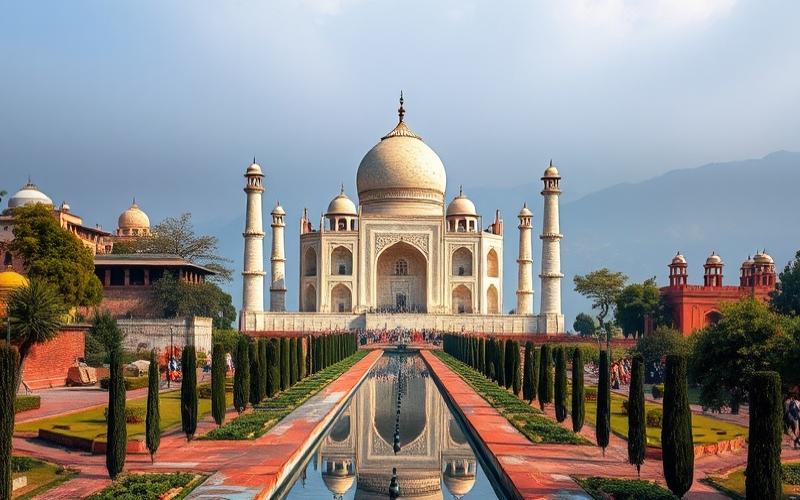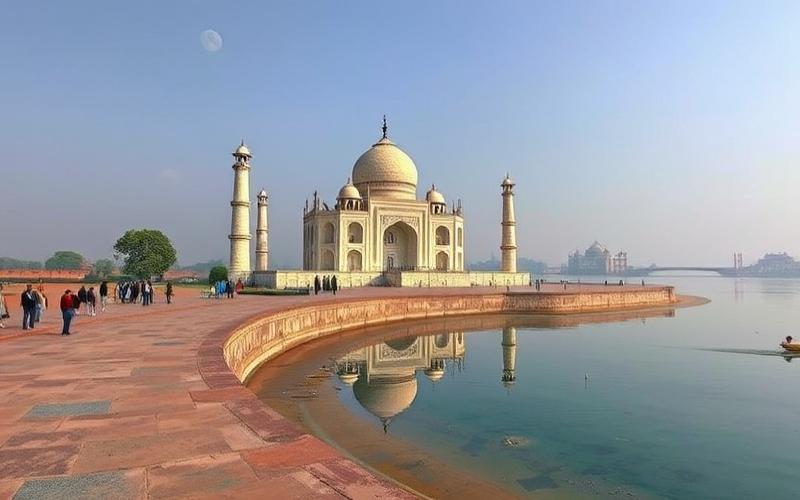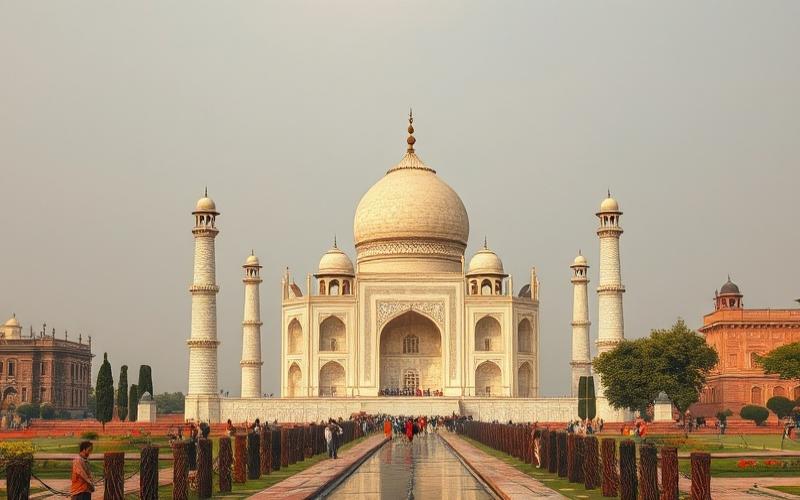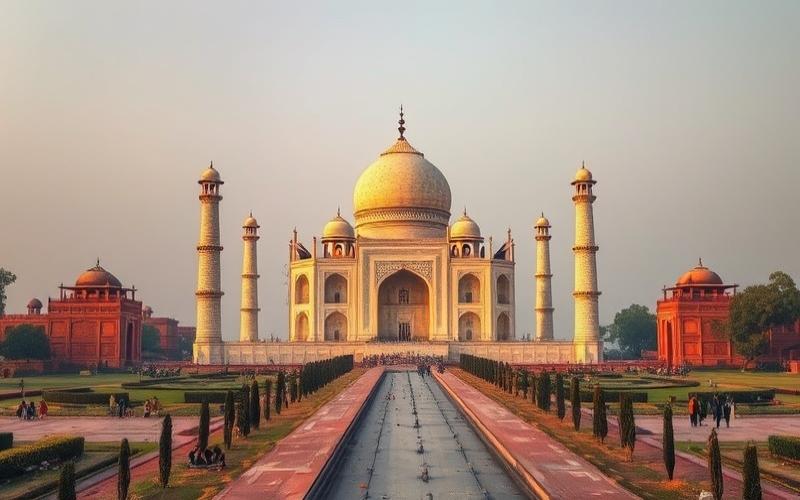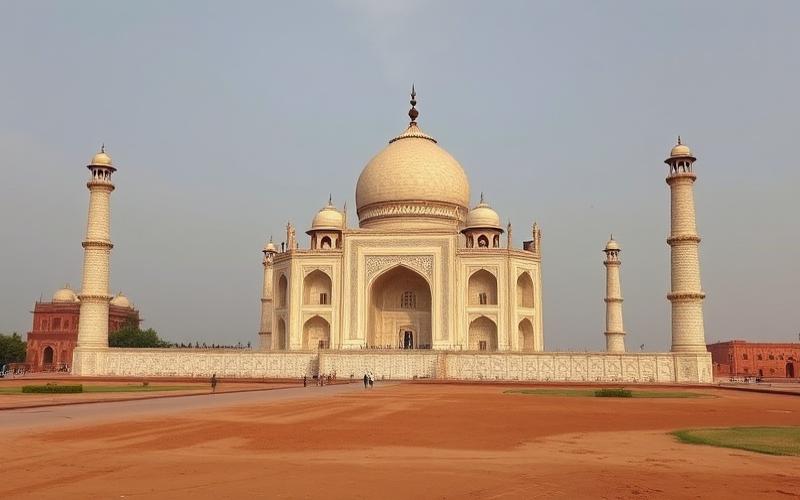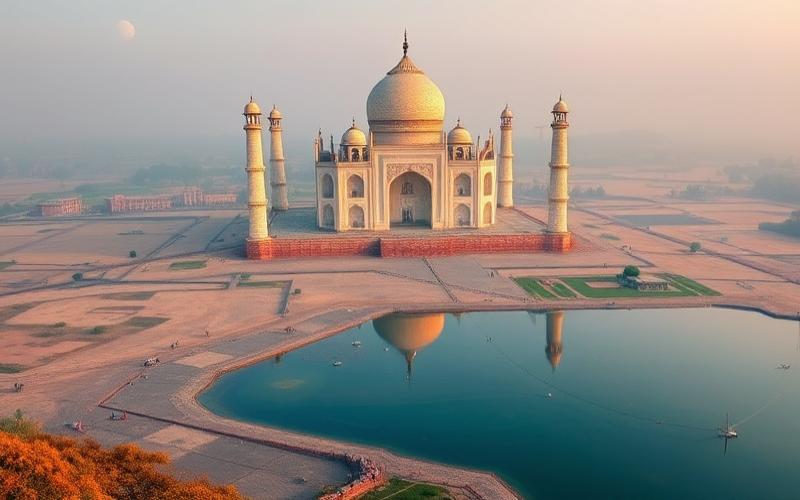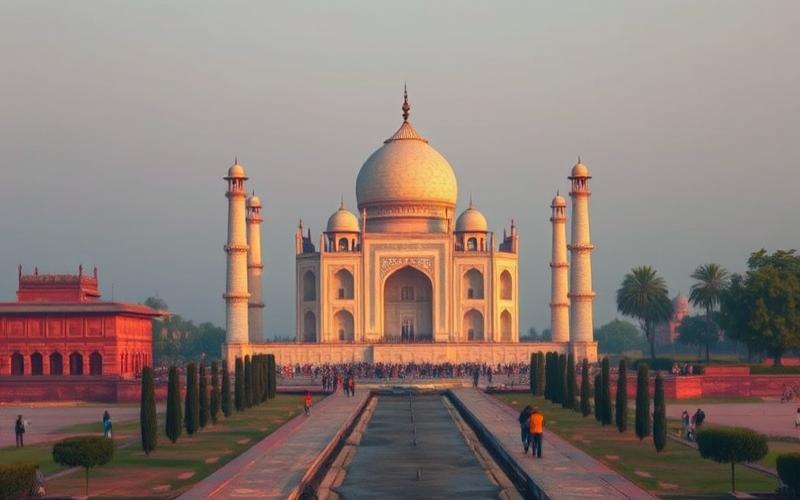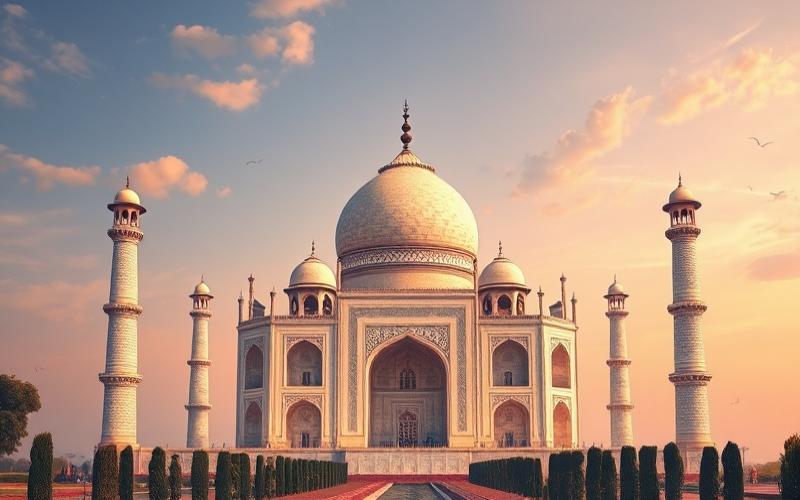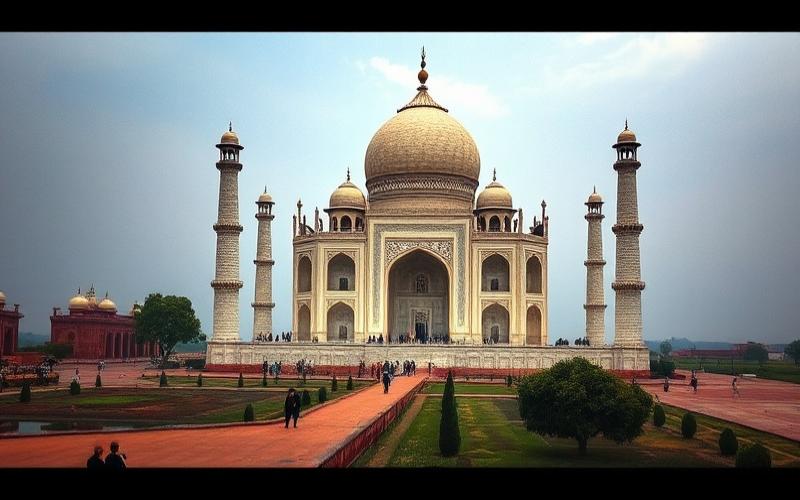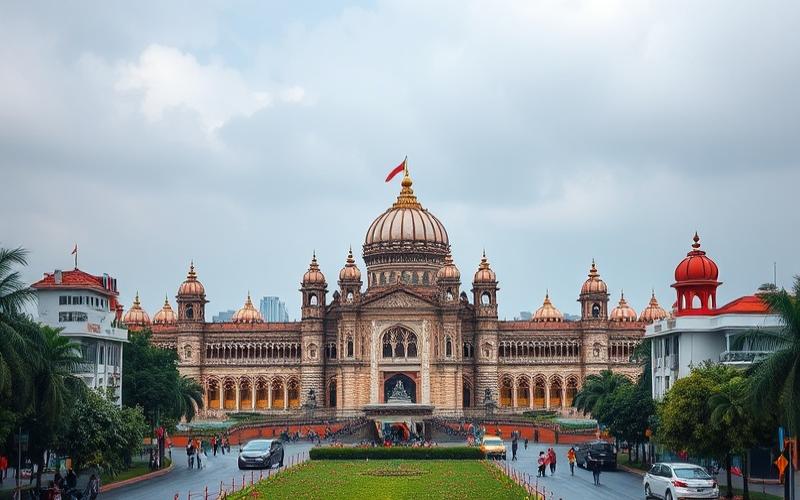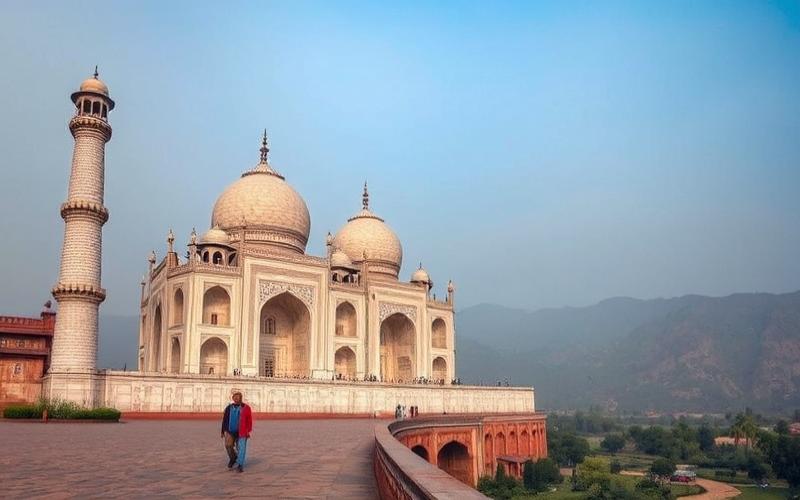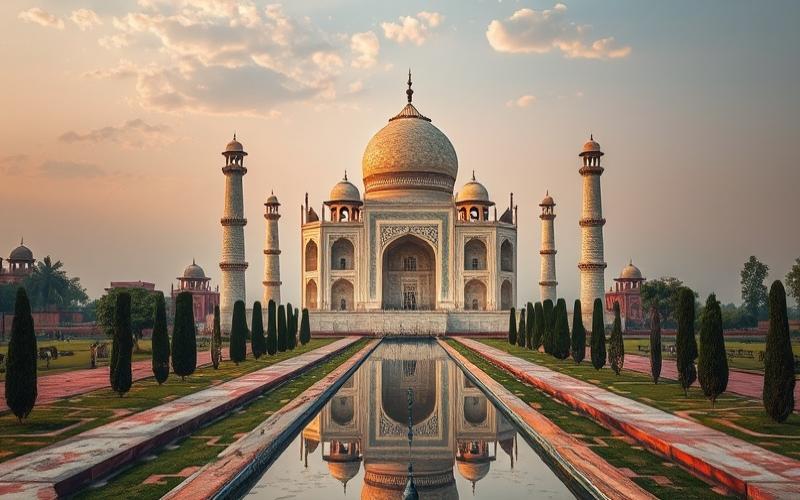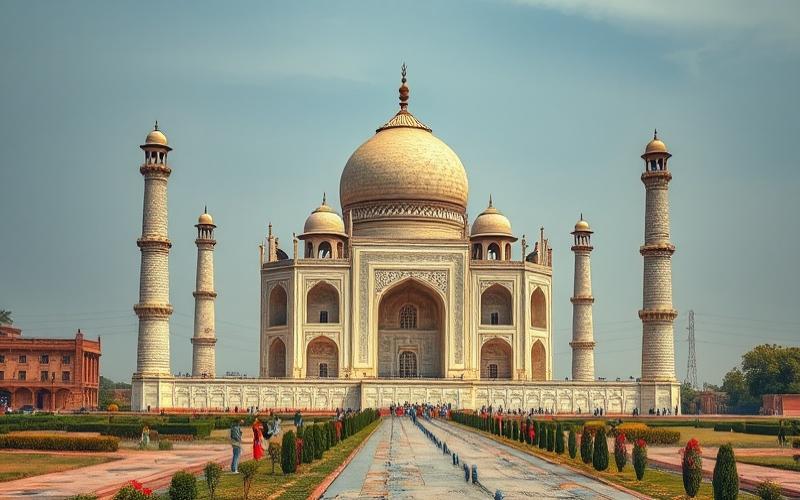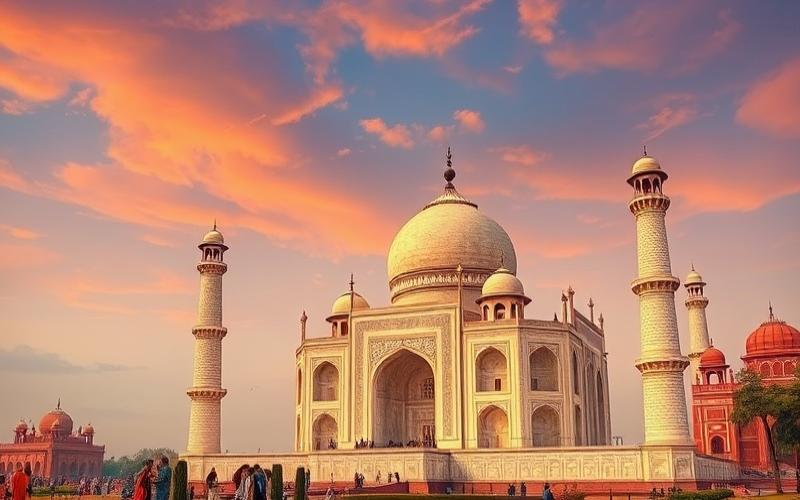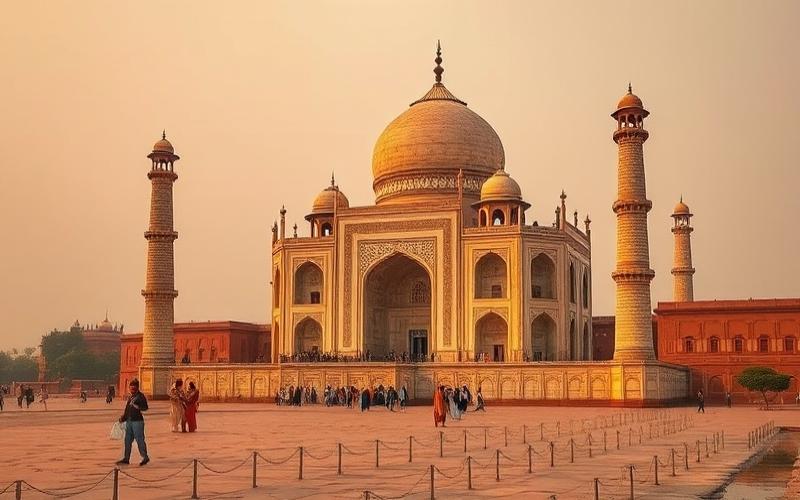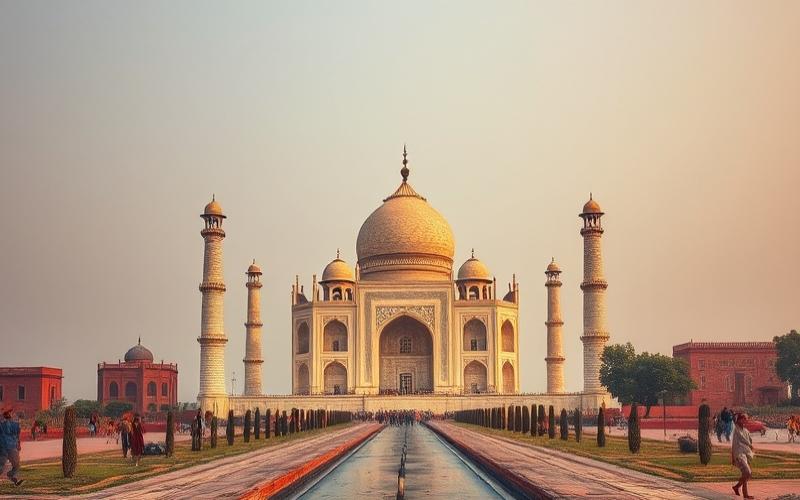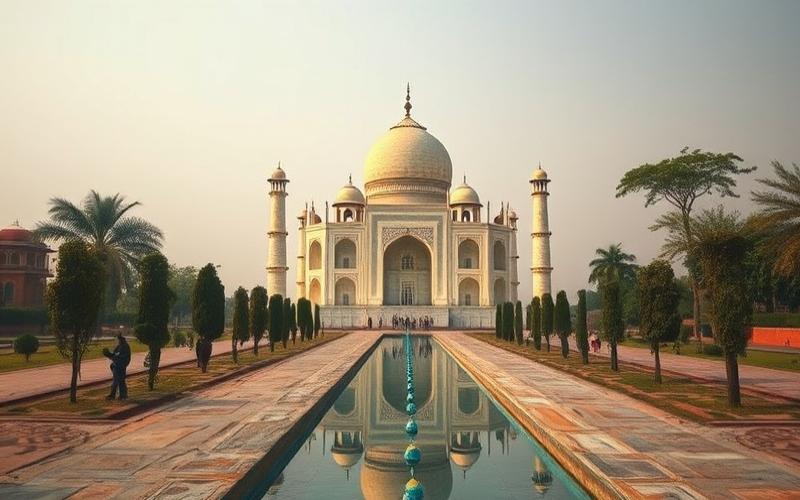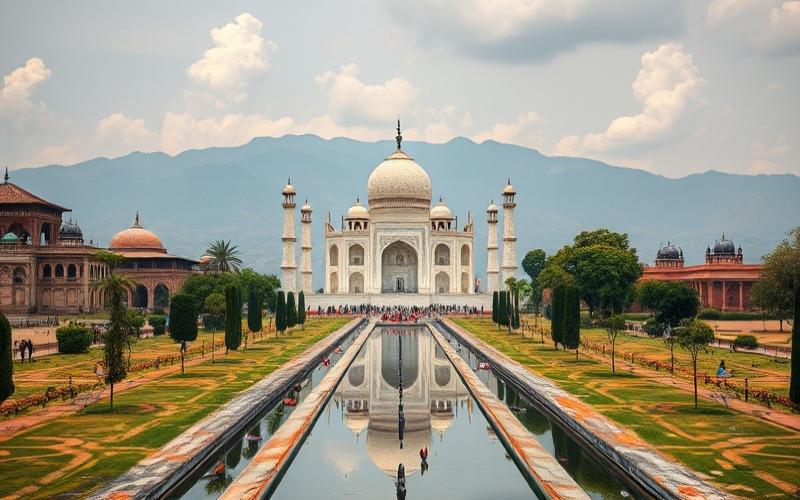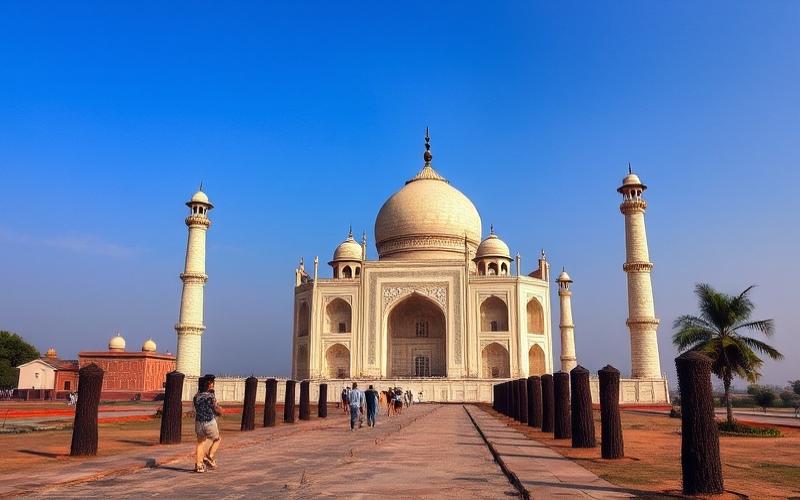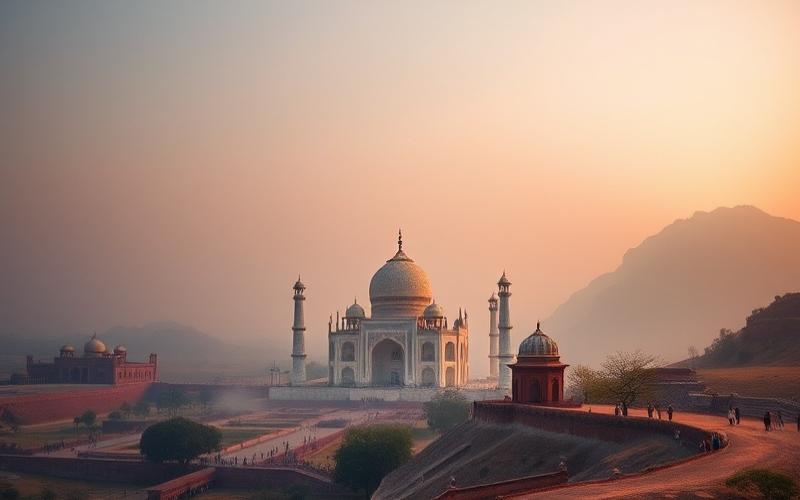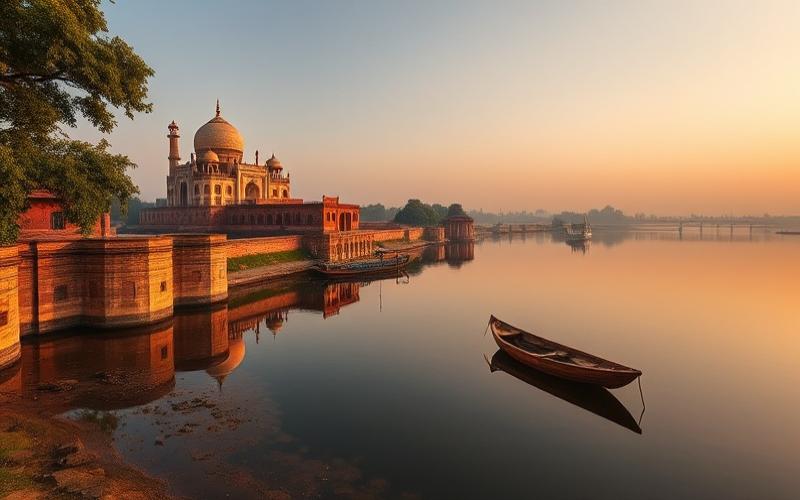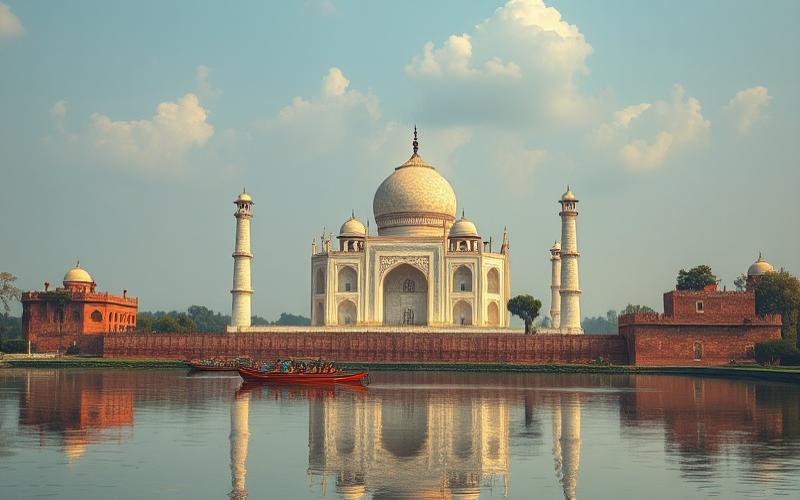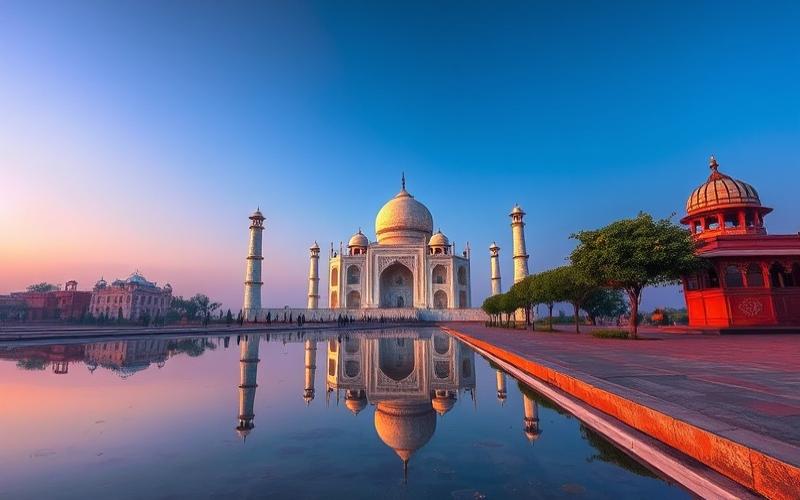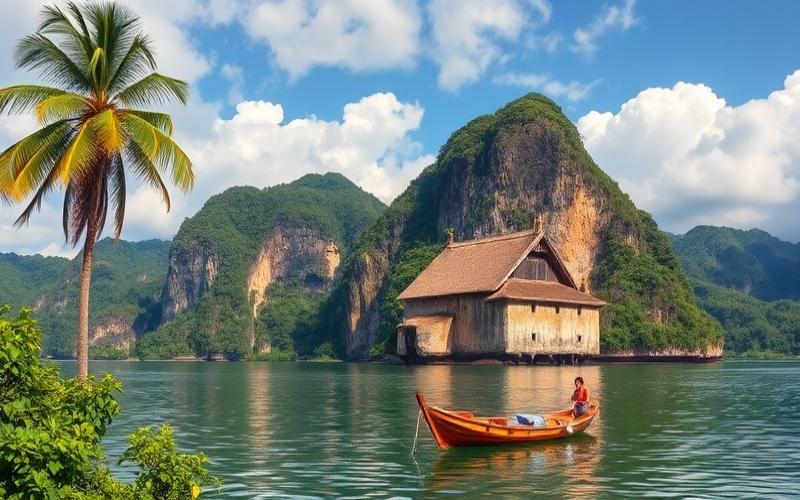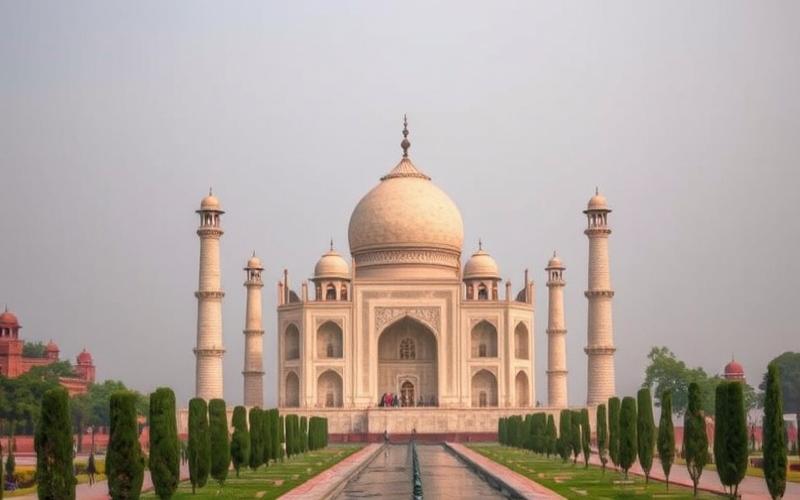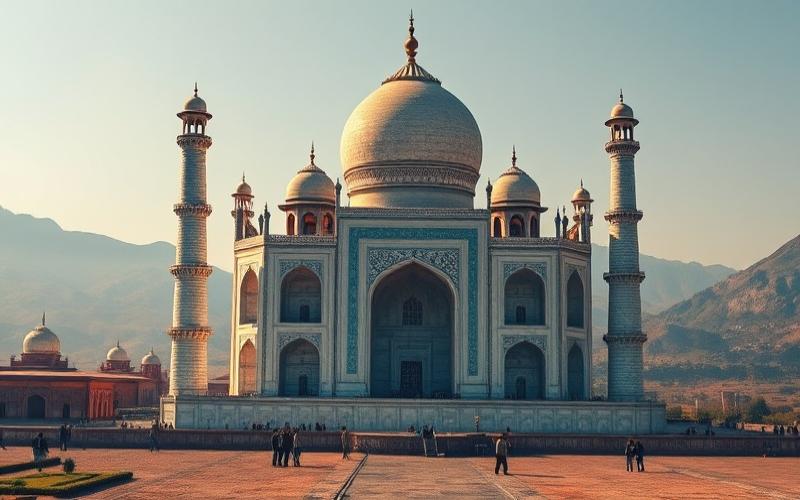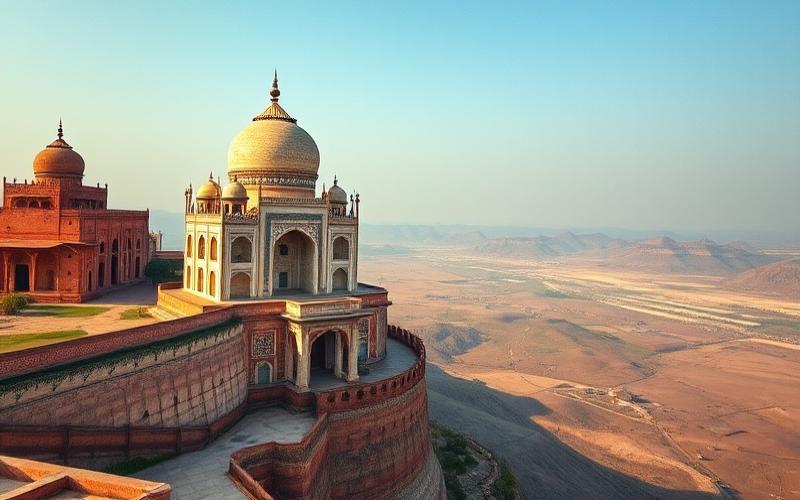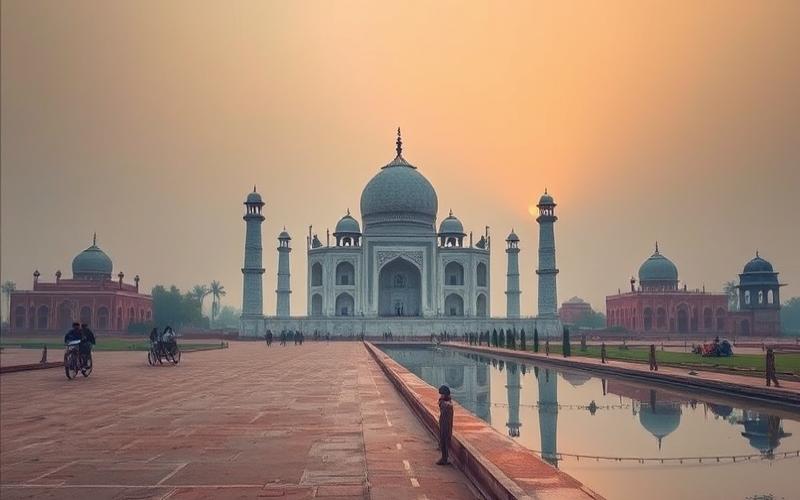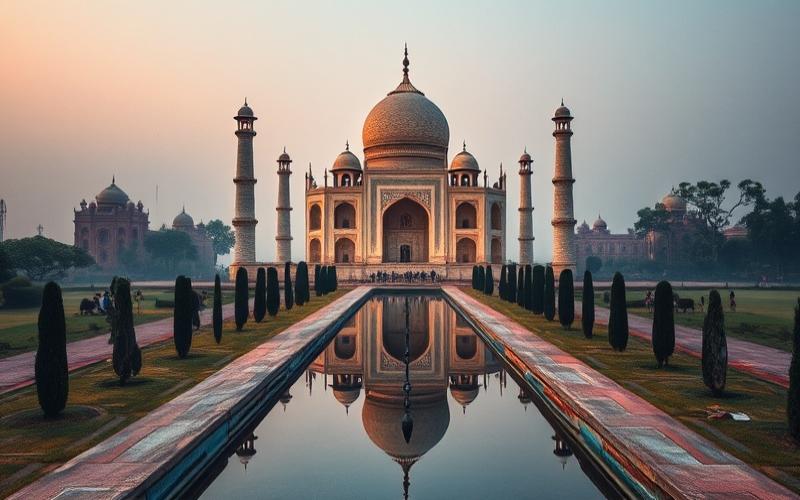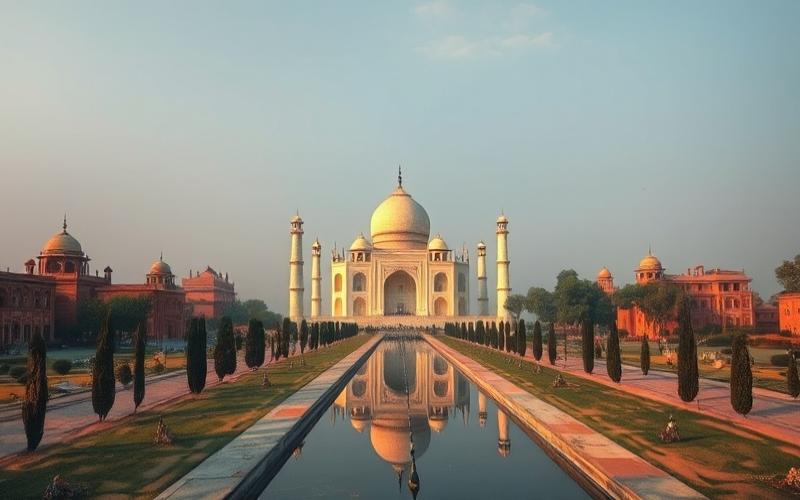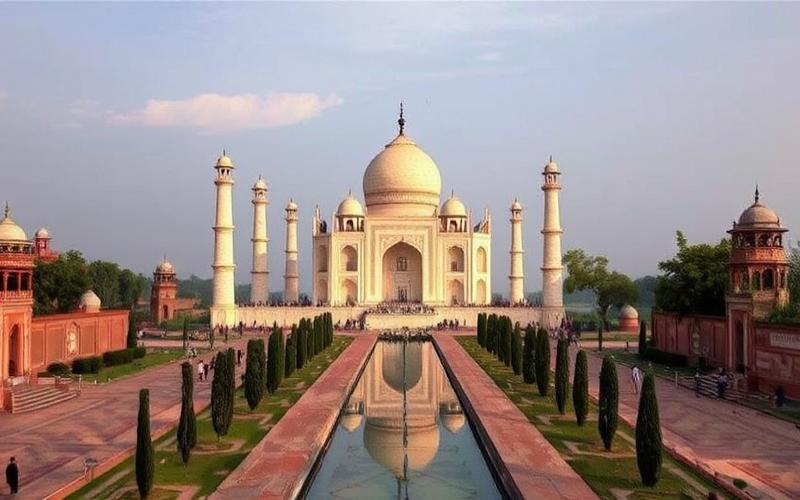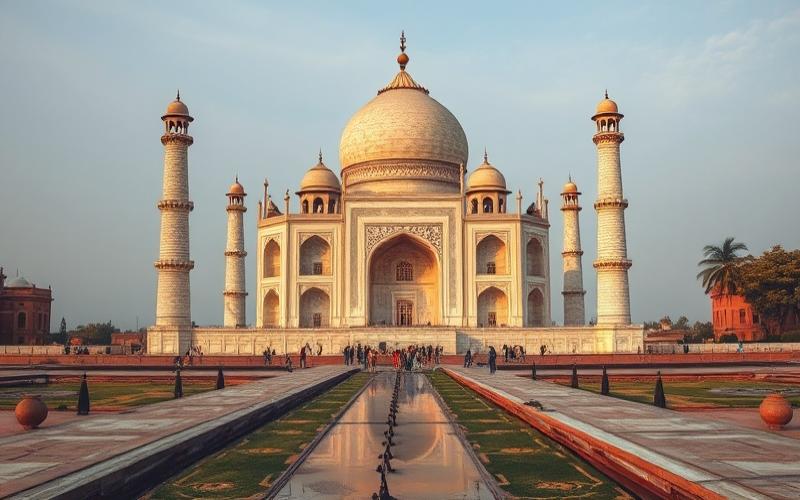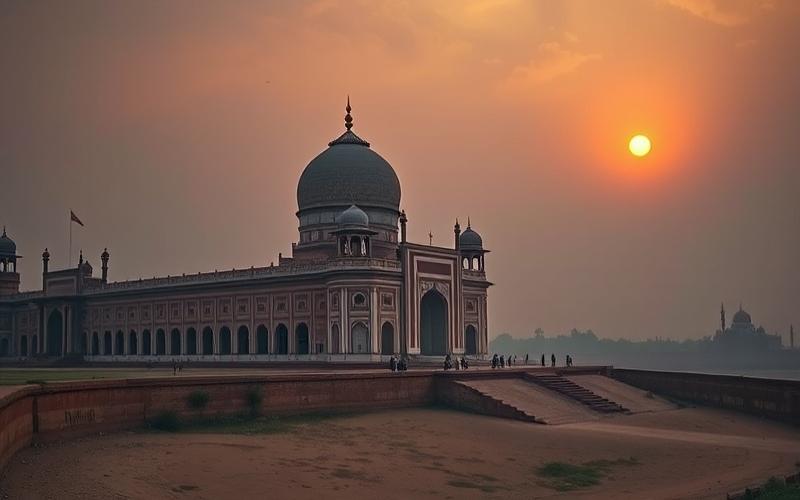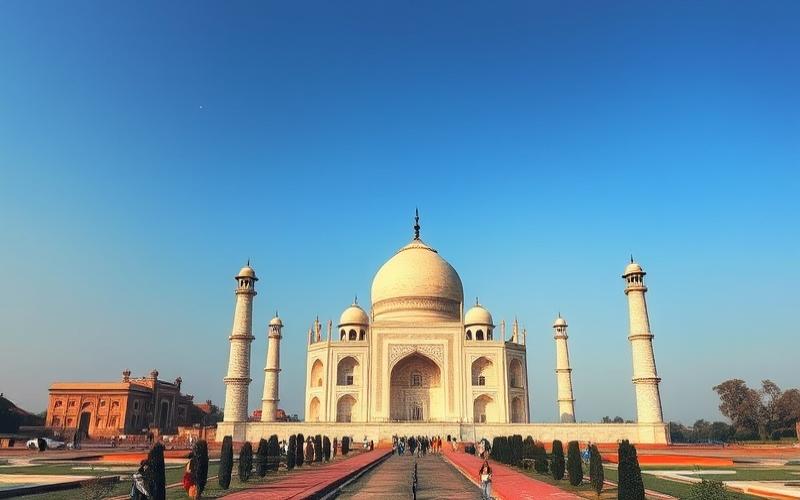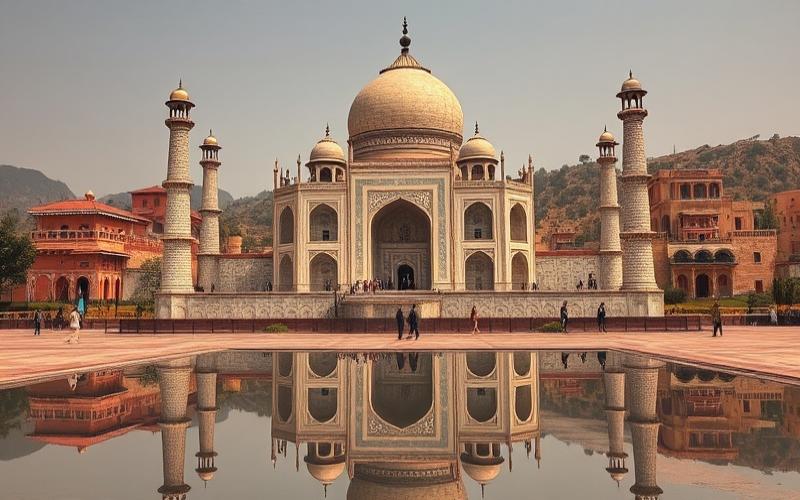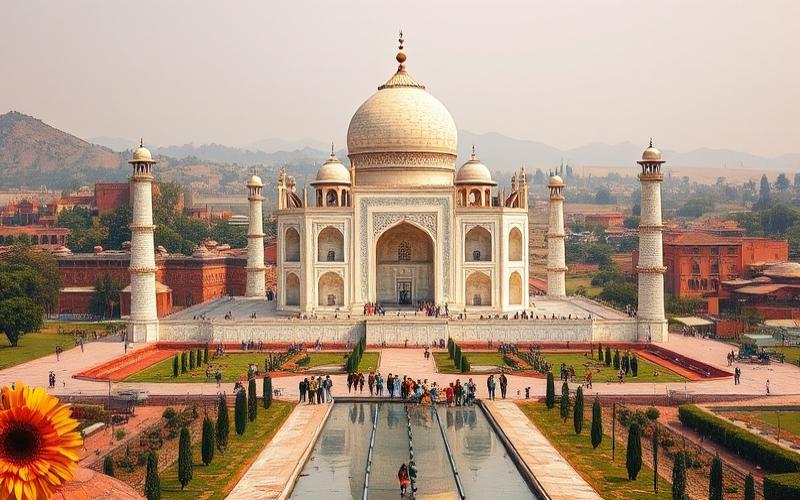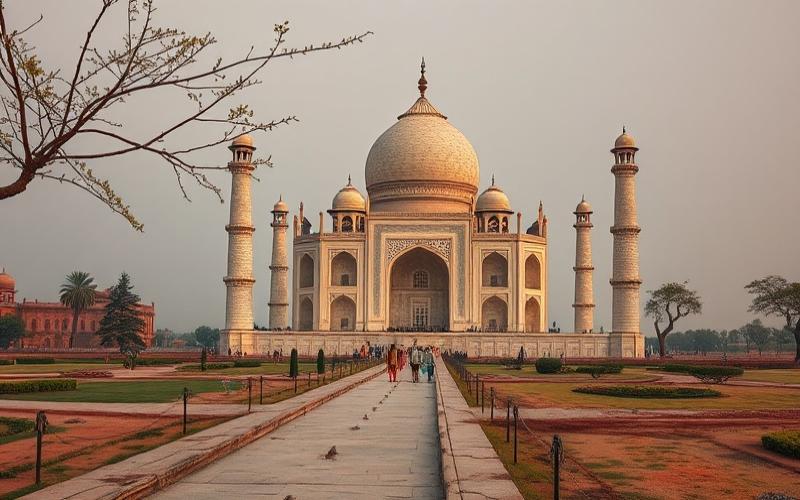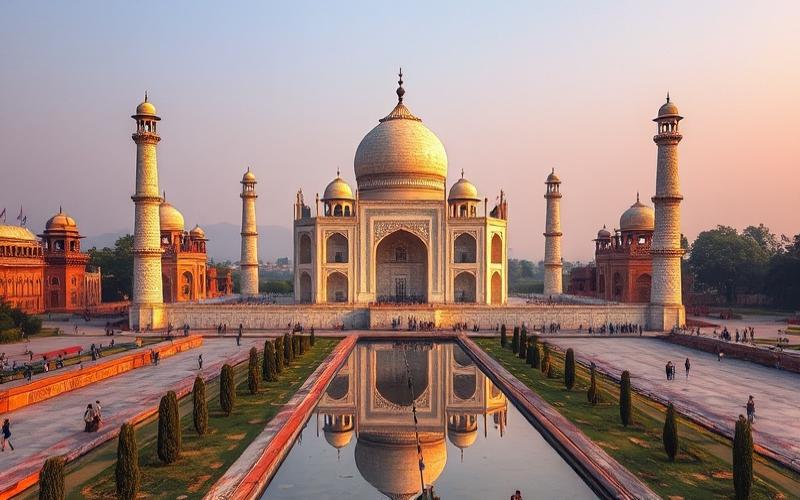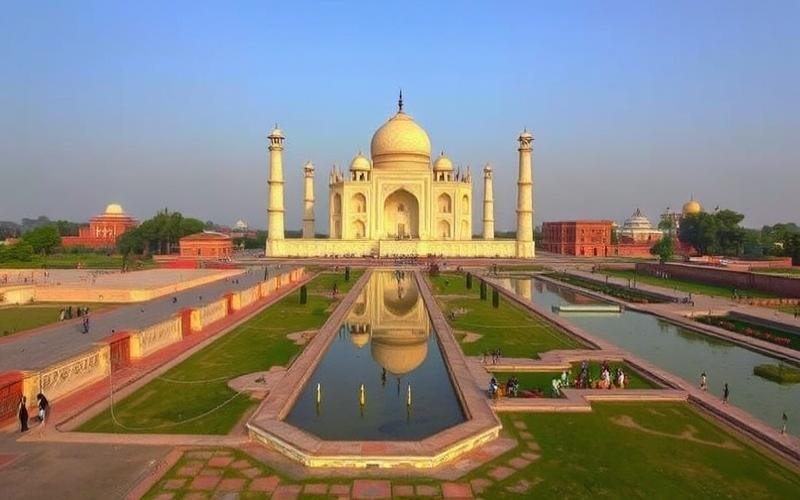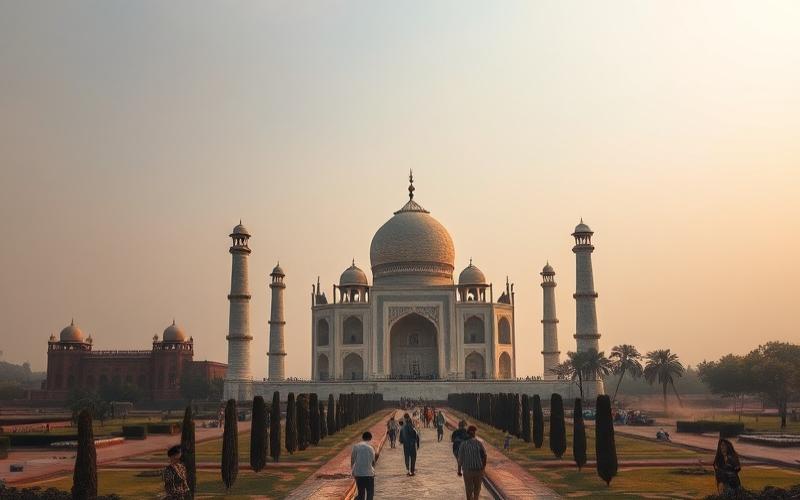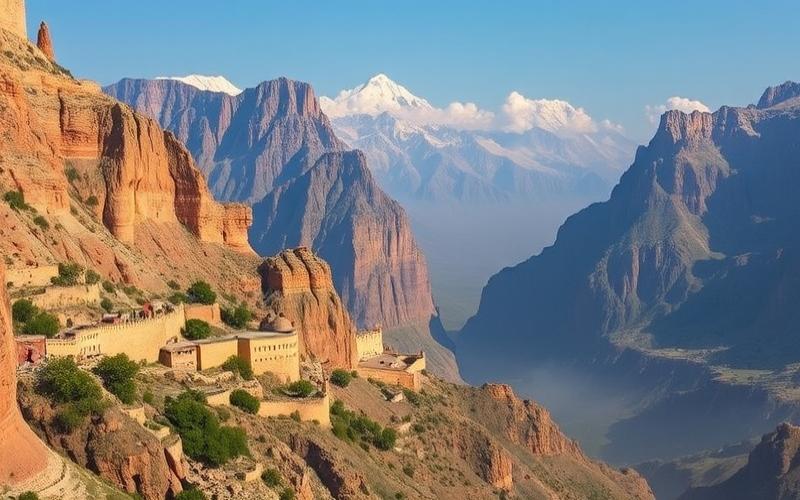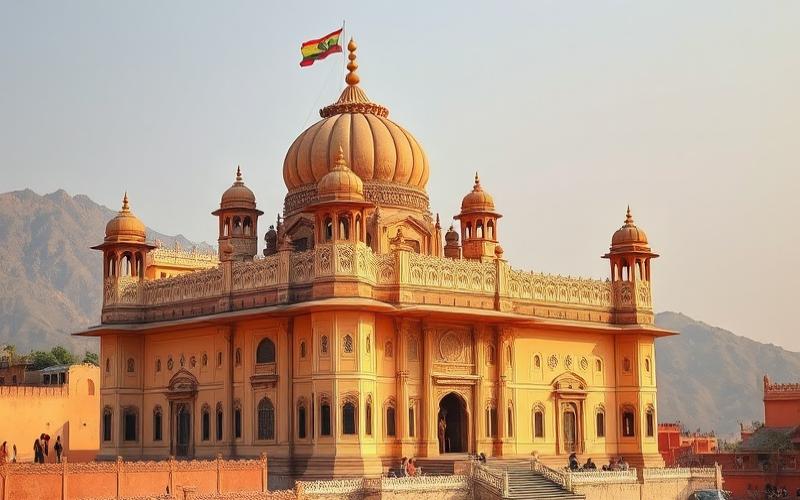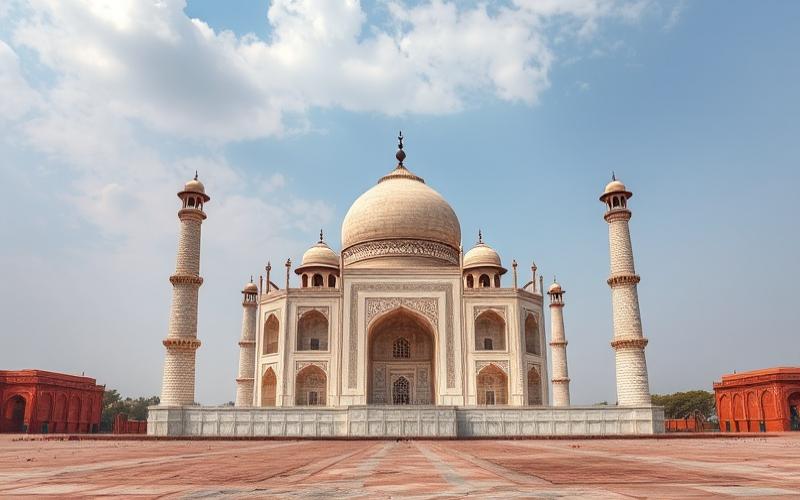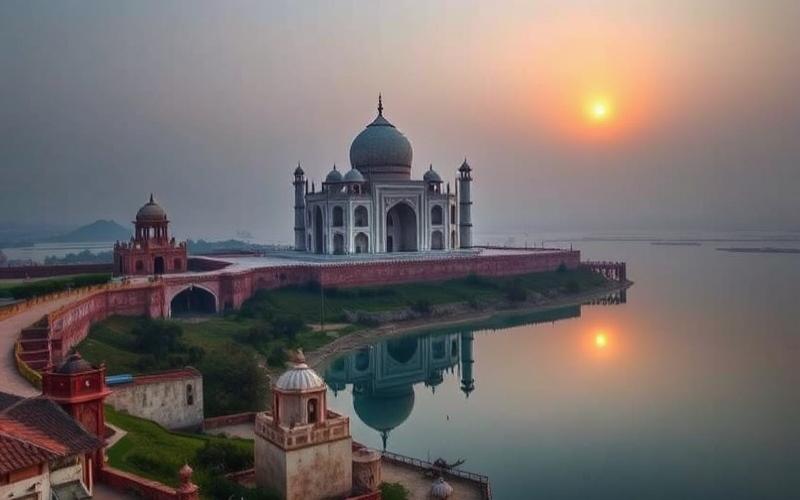
 Published on and written by Cyril Jarnias
Published on and written by Cyril Jarnias
India, a country marked by lush spiritual diversity, reveals to the world a religious landscape where majestic temples, ancient mosques, colonial churches, and lesser-known but equally vibrant places of worship coexist harmoniously.
The weight of history and the richness of traditions manifest through a multitude of ceremonies and festivities, reflecting a cultural patchwork where each religious community, whether Hindu, Muslim, Christian, Sikh, or Buddhist, weaves the threads of a collective heritage.
These sacred spaces, far from being mere structures, embody the living essence of deeply rooted beliefs and offer a window into ancient rituals, vectors of unity and continuity for millions of Indians.
Major Places of Worship in India
India, marked by exceptional religious diversity, is home to numerous iconic places of worship from different traditions. Each of these sites plays a fundamental role in the spiritual, cultural, and social life of its followers, while reflecting a distinct history and architecture.
| Religious Tradition | Place of Worship | City/State | Historical and Cultural Significance | Architectural Features | Role in Daily Life |
|---|---|---|---|---|---|
| Sikhism | Golden Temple (Harmandir Sahib) | Amritsar, Punjab | Considered the most sacred shrine of Sikhism; symbol of openness and equality; built in the late 16th century; site of many major historical events | Surrounded by the sacred Amrit Sarovar pool; four entrances symbolizing universal welcome; covered with 750 kg of gold; blend of Mughal and Rajput architectural influences; interiors decorated with frescoes and marble inlays | Spiritual and community center; hosts the Langar (free community kitchen); major pilgrimage site |
| Hinduism | Meenakshi Temple | Madurai, Tamil Nadu | Dedicated to Goddess Meenakshi (Parvati); millennial pilgrimage site; cultural center of South India | Richly sculpted and colorful gopuram towers; vast complex with shrines and pools; Dravidian architecture | Hosts major festivals; center of local religious and social life |
| Hinduism | Tirupati Temple (Venkateswara) | Tirupati, Andhra Pradesh | One of the most visited temples in the world; dedicated to Vishnu (as Venkateswara); symbol of devotion and prosperity | Dravidian architecture; gold ornaments; main sanctuary on a sacred hill | Ritual of hair donation; massive influx of pilgrims daily |
| Islam | Jama Masjid | Delhi | One of the largest mosques in India; built by Mughal Emperor Shah Jahan in the 17th century; religious and cultural center of Delhi’s Muslim community | Three large white marble domes; imposing minarets; vast courtyard accommodating thousands of worshippers | Central location for Friday prayers; gatherings during major festivals like Eid |
| Christianity | St. Thomas Cathedral | Chennai, Tamil Nadu | Built on the tomb of Apostle Thomas; symbol of ancient Christian presence in India; major pilgrimage site | Neo-Gothic architecture; stained glass windows; crypt containing the relic of St. Thomas | Place of worship and gathering for Christians in South India |
| Buddhism | Dhamekh Stupa | Sarnath, Uttar Pradesh | Site where Buddha delivered his first sermon; major archaeological site and global pilgrimage center | Massive cylindrical stone and brick structure; floral decorations and inscriptions | Pilgrimage, meditation, Buddhist celebrations |
Key Points on Religious Diversity and the Importance of These Sites:
- The presence of these places of worship reflects the coexistence of multiple religions in India, each having a profound impact on local culture, architecture, and society.
- These sites are not only spaces for prayer but also centers for mutual aid, teaching, gathering, and social action.
- The architecture of these places often illustrates a dialogue between local styles and external influences (Mughal, Dravidian, Gothic, etc.), testifying to a shared history and cultural exchanges.
- The massive attendance at these sites during religious festivals or pilgrimages strengthens community cohesion and spiritual identity.
India’s religious diversity shapes the importance and vitality of these major places of worship, which remain key landmarks in the daily and cultural life of the population.
Good to Know:
In India, religious diversity is reflected by the presence of iconic places of worship that play an essential role in the life of communities. The Golden Temple in Amritsar, a Sikh spiritual center, is famous for its gleaming architecture and hospitality open to all visitors, while the Meenakshi Temple in Madurai enchants with its colorful gopurams and devotion to Shiva and Parvati in Hinduism. The Tirupati Temple, known for its influx of devoted pilgrims, illustrates Hindu religious richness. The Jama Masjid Mosque in Delhi, with its vast courtyards and Mughal influence, remains a central place for Muslims, while St. Thomas Cathedral in Chennai is an architectural testimony to the Christian presence since apostolic times. Finally, the Dhamekh Stupa in Sarnath, an important Buddhist site, marks the place where Buddha gave his first sermon, attracting practitioners from around the world. These sites are not only architectural marvels but also places of gathering and celebration, illustrating the complex tapestry of faith in India.
Religious Communities and Cultural Diversity
Main Religions Practiced in India and Their Distribution
| Religion | % of Population | Main Geographic Distribution |
|---|---|---|
| Hinduism | ~80% | Throughout India |
| Islam | ~13-14% | North, Northwest, Kerala |
| Christianity | ~2-3% | South India, Kerala |
| Sikhism | ~2% | Punjab |
| Buddhism | ~0.6-1% | Maharashtra, Ladakh |
| Jainism | ~0.4% | Gujarat, Rajasthan |
India is the birthplace of Hinduism, Buddhism, Jainism, and Sikhism. Islam and Christianity have been present for over a millennium.
Examples of Iconic Places of Worship
- Hinduism: Kashi Vishwanath Temple (Varanasi), Meenakshi Temple (Madurai)
- Islam: Jama Masjid Mosque (Delhi), Charminar Mosque (Hyderabad)
- Christianity: St. Thomas Basilica (Chennai), St. Francis Church (Kochi)
- Sikhism: Golden Temple Harmandir Sahib (Amritsar)
- Buddhism: Mahabodhi Temple (Bodh Gaya)
- Jainism: Dilwara Temples (Mount Abu)
Influence on Indian Culture
Religious diversity shapes Indian culture through:
- A rich festive calendar where each religion celebrates its major holidays:
- Hindus: Diwali (festival of lights)
- Muslims: Eid-ul-Fitr (end of Ramadan)
- Christians: Christmas
- Sikhs: Vaisakhi
- Buddhists: Vesak (Buddha’s birthday)
- Jains: Paryushana
- Varied culinary traditions influenced by religious dietary restrictions.
- Characteristic architecture of different spiritual currents.
Challenges Related to Religious Diversity
List of main challenges:
- Occasional inter-community tensions
- Social or political discrimination in some regions
- Risks of political instrumentalization
Opportunities Offered by This Diversity and Interreligious Initiatives
List of opportunities and positive actions:
- Exceptional cultural richness promoting international tourism.
- Growing interreligious dialogue in major cities.
- Local initiatives such as shared festivals or educational projects to promote tolerance.
- Non-governmental organizations working for social harmony.
The centuries-old coexistence between these communities encourages collective resilience in the face of contemporary challenges. Many citizen movements today work for increased mutual respect among believers.
Good to Know:
In India, Hinduism is the main religion, representing about 79.8% of the population, followed by Islam (14.2%), Christianity (2.3%), Sikhism (1.7%), Buddhism (0.7%), and Jainism (0.4%). Hindu temples, like the Meenakshi Temple in Madurai, Islamic mosques such as the Jama Masjid in Delhi, Christian churches like the Basilica of Bom Jesus in Goa, Sikh gurdwaras like Harmandir Sahib in Amritsar, as well as Buddhist monasteries in Bodh Gaya and Jain temples in Palitana, constitute major places of worship. Religious diversity profoundly impacts Indian culture, generating a multitude of festivals, including Diwali, Eid, Christmas, Baisakhi, and the Buddhist New Year. This plurality poses challenges, particularly in terms of inter-community tensions, but also opens opportunities for interreligious dialogue, with initiatives like the Interreligious Peace Festival in Delhi, aiming to strengthen tolerance and social harmony.
Integration of Expatriates into Indian Religious Life
Expatriate Participation in Religious Practices in India:
- Expatriates often participate in Indian religious life in various ways:
- Some take part in major festivals (Diwali, Holi, Eid, Christmas, etc.), either as observers or by being invited by colleagues or neighbors.
- Others attend domestic or community rituals, particularly in Hinduism (puja), Sikhism (community service in gurdwaras), or participate in Buddhist meditations.
- Expatriates practicing minority religions (Christianity, Judaism, Islam, etc.) generally find suitable places of worship in major cities, where churches, mosques, synagogues, or dedicated temples exist.
The search for suitable places of worship heavily depends on the city:
- In metropolises (Delhi, Mumbai, Bangalore, Chennai, Kolkata), the presence of international communities facilitates access to a diversity of places of worship.
- In secondary cities or rural areas, it is more difficult for expatriates to find religious structures corresponding to their faith.
Efforts by Local Communities for Welcome and Integration:
- Religious communities frequently organize:
- Community meals open to all (langar in Sikh gurdwaras, shared iftar during Ramadan, Christian parish meals).
- Guided tours of places of worship, with cultural and historical explanations adapted for the uninitiated.
- Discussion or interreligious study groups, often conducted in English in major cities.
Some associations, sometimes stemming from the expatriate community itself, facilitate integration by offering:
- Multi-faith prayer or meditation groups.
- Support services to help understand local rites or organize ceremonies adapted to one’s original tradition.
Examples of Programs or Interreligious Activities Facilitating Integration:
| Program/Activity | Description |
|---|---|
| Sikh Langar | Free community meal, open to all without distinction of religion or origin |
| University Interreligious Dialogues | Meetings organized by universities or NGOs, promoting cultural and religious exchange |
| Shared Festivals | Inviting expatriates to celebrate Diwali, Christmas, Eid, or Vesak with local families |
| Religious Discovery Workshops | Visits to temples, mosques, churches with explanations in English or a third language |
Cultural and Linguistic Challenges Faced by Expatriates:
Language:
- Many rituals or sermons are in Hindi, Tamil, Bengali, or other regional languages, limiting direct understanding.
- In major cities, services in English are sometimes offered, particularly in Christian churches and some Buddhist temples.
Culture:
- Dress codes, rules of purity, or access to certain places (e.g., prohibition of entering the main sanctuary for non-Hindus in some temples) can surprise or unintentionally exclude.
- The diversity of practices within the same religion can make adaptation complex (e.g., differences between Syro-Malabar and Latin rites in Indian Christianity).
Social Perception:
Sometimes, a certain reserve may exist from local communities, fearing unintentional disrespect of rites or proselytism.
Impact on Intercultural and Interreligious Links:
The integration of expatriates into Indian religious life often contributes to strengthening intercultural exchanges and tolerance:
- Cross-participation in festivals and rites promotes mutual understanding.
- Interreligious programs offer a space for dialogue, reducing prejudices and fostering inclusion.
- In some cases, expatriates become relays to valorize Indian diversity internationally.
The experience of Indian religious plurality can also encourage expatriates to adopt a more open and respectful stance towards cultural and spiritual differences.
Important Text:
India, through its tradition of religious pluralism and constitutional secularism, offers favorable ground for the integration of expatriates into religious life, despite challenges of a linguistic, cultural, and sometimes administrative nature. The efforts of local communities and the richness of interreligious exchanges contribute to making this experience a vector for rapprochement and intercultural dialogue.
Good to Know:
The integration of expatriates into religious life in India is manifested by their active participation in local practices, as many expatriates find welcoming communities that offer places of worship suited to their faith, whether Hindu, Muslim, Christian, or Buddhist. Temples, mosques, and churches, often located in major cities, offer services in English to facilitate their inclusion. Local communities organize interreligious events, such as shared celebrations or conferences, to promote dialogue and cultural integration. Despite these efforts, expatriates may encounter cultural and linguistic obstacles, particularly in temples where rituals are primarily conducted in local languages, such as Hindi or Tamil. Nevertheless, the participation of expatriates in these activities encourages the strengthening of intercultural links and contributes to better understanding and coexistence among different religious traditions in India.
Challenges and Opportunities for Religious Expatriates
Main Difficulties Encountered by Religious Expatriates in India:
- Cultural and Social Differences
Integration requires adaptation to local customs, often very different from those of origin. For example, respect for elders is fundamental, and it is customary to remove shoes in a house or place of worship. Indian religious traditions can be complex for a newcomer to grasp. - Linguistic Barriers
With over 1,600 languages spoken in India, communication can represent a major obstacle for expatriates during religious ceremonies or within spiritual communities. - Legal Restrictions on Certain Religious Practices
Religious freedom is guaranteed by the Constitution (Article 25), but it remains limited by public order, morality, and health. Some ritual practices may be prohibited or restricted locally; for example, Angapradakshinam (a Hindu ritual) has been banned in some states despite defense in the name of individual freedom. - Sometimes Conservative Sociocultural Context
Indian social norms are marked by the weight of the extended family and a certain community pressure that sometimes leads to concealing personal convictions or belonging to a religious or sexual minority.
Concrete Examples and Testimonials:
- A French woman based in Mumbai explains having to present her partner as “a close friend” at family events.
- An American man living in Bangalore prefers to keep his private life quiet at work to avoid professional isolation.
- Christian expatriates report difficulties related to Christian holidays being little celebrated locally outside major international cities.
Opportunities Offered to Religious Expatriates in India:
- Exceptional access to a diversity of places of worship:
- Hindu temples
- Mosques
- Catholic and Protestant churches
- Historic Jewish synagogues
- International Buddhist centers
- Possibility to live in international interreligious communities:
- Cosmopolitan cities such as Mumbai, Delhi, or Bangalore host several foreign spiritual groups organizing multilingual services.
- Unique spiritual experiences:
- Participation in major traditional festivals (Diwali, Holi…)
- Yoga/ashram retreats open to non-Indians
- Interfaith meetings favored by Indian pluralism
Facilitation of Social Integration Through Religion:
Engagement in community activities (local festivals, associative charitable works) often allows:
- Quick learning of local social codes
- Building strong intercultural links
- Reducing the feeling of isolation frequently felt during the first months
| Main Religion | Estimated Presence Among Expatriates | Geographic Distribution |
|---|---|---|
| Christianity | High | Major cities |
| Islam | Medium | North & metropolises |
| Buddhism | Low/medium | North/Northeast |
| Judaism | Very low | Mumbai/Kolkata |
| Hinduism | Marginal presence among expats | Throughout |
Initiatives Organized to Support Religious Expatriates:
- Bilingual groups offering translations during major services.
- International associations facilitating access to local holy sites.
- Monthly intercultural workshops on interreligious dialogue in several important urban centers.
- Psychological support offered through associative networks to better cope with cultural shock related to religious/societal change.
India’s spiritual richness thus constitutes both a challenge and an unprecedented source of universal experiences for any believer coming to settle there.
Good to Know:
Religious expatriates in India may encounter difficulties related to cultural and linguistic differences, as well as legal restrictions that complicate the practice of their faith. For example, a Christian expatriate may struggle to understand local Christian practices that incorporate Indian cultural elements. However, India offers a multitude of opportunities with its diversity of places of worship, from Hindu temples to mosques and churches. Expatriates can participate in international communities like yoga centers or ashrams that attract devotees from around the world, thus facilitating enriching spiritual experiences. Certain initiatives, such as interfaith support groups in Bangalore and Mumbai, aid integration by allowing individuals to engage in religious or community activities, fostering a sense of belonging. Statistics reveal a notable presence of Christians and Muslims among expatriates, and involvement in local rituals can enrich their experience while mitigating cultural shock.
Disclaimer: The information provided on this website is for informational purposes only and does not constitute financial, legal, or professional advice. We encourage you to consult qualified experts before making any investment, real estate, or expatriation decisions. Although we strive to maintain up-to-date and accurate information, we do not guarantee the completeness, accuracy, or timeliness of the proposed content. As investment and expatriation involve risks, we disclaim any liability for potential losses or damages arising from the use of this site. Your use of this site confirms your acceptance of these terms and your understanding of the associated risks.

